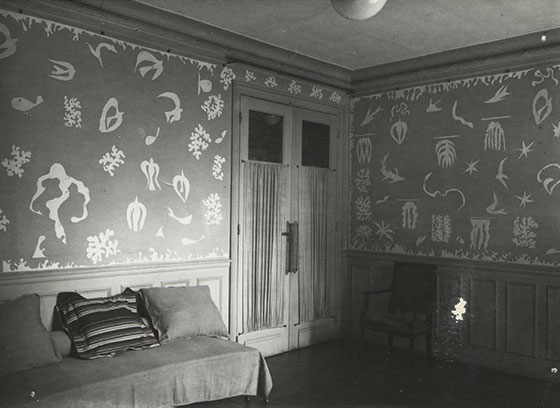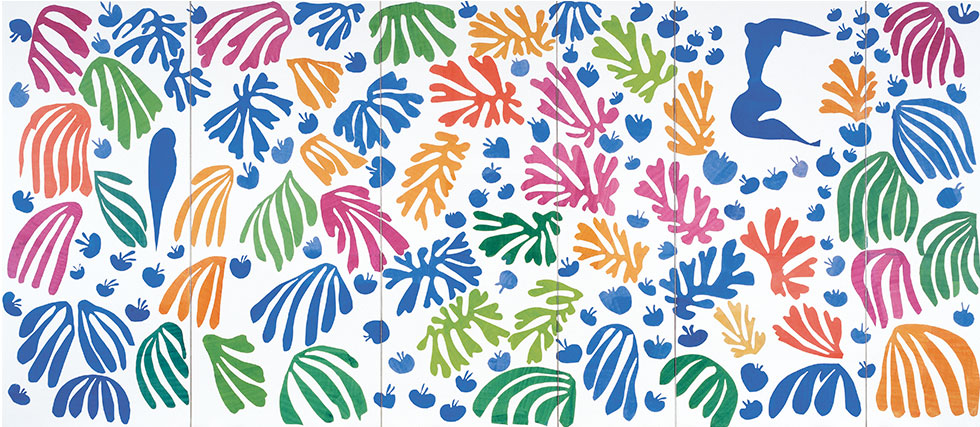
Drawing With Scissors
The Paper Cut-outs of Henri Matisse
Cutting into Color
Matisse used paper throughout his career as part of his artistic process, being used primarily for composition layouts but never for a final piece and it wasn’t until 1946 with Oceania that he produced his first formal cut-out. The cut-outs were, Matisse later confessed” a long time in the making.” The technique turned out to be perfect for Matisse’s vision; he was a master colorist and his drawings focused on line and movement, not on realism. In his paintings, he used bold colors, graphic compositions and patterns. He also broke down complex forms into basic shapes, particularly the human figure. In this way, the paper cut-out was the purest marriage of color and form. “Cutting directly into color reminds me of a sculptor’s carving into stone.” More than being an exhibit of his work, it’s also an exhibit of his words. Better than trying to offer interpretations of the master and his work, there’s no one better to explain Matisse, his thoughts and process than artist himself and all the words that follow are his.
“I have been working on my craft for a long time. Up until now it is just as if I had only been learning things, elaborating my means of expression…Now it is as if I were somebody who is getting ready to tackle large-scale composition.”
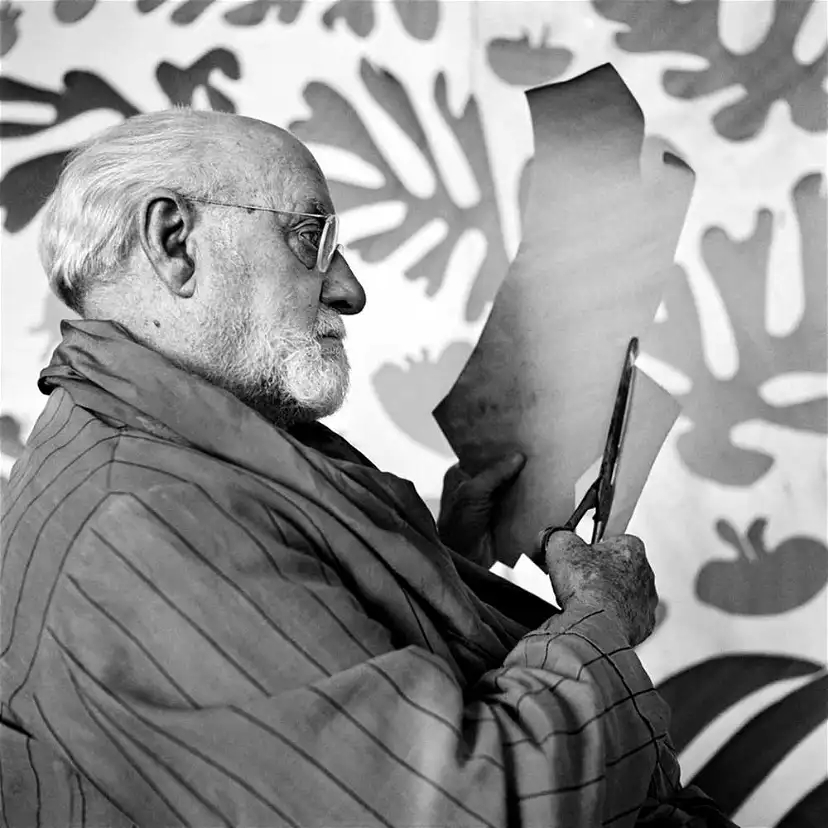

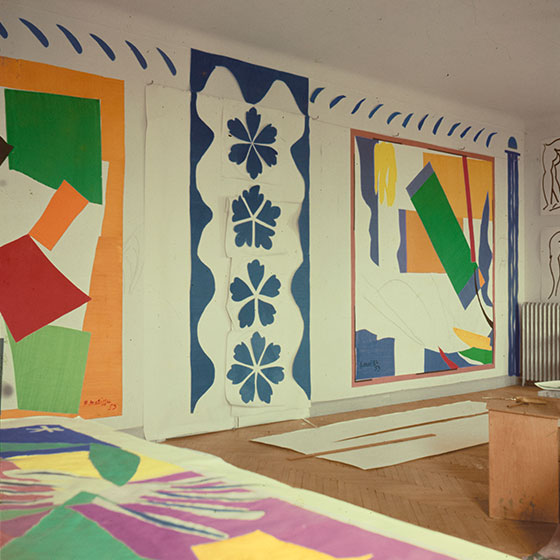
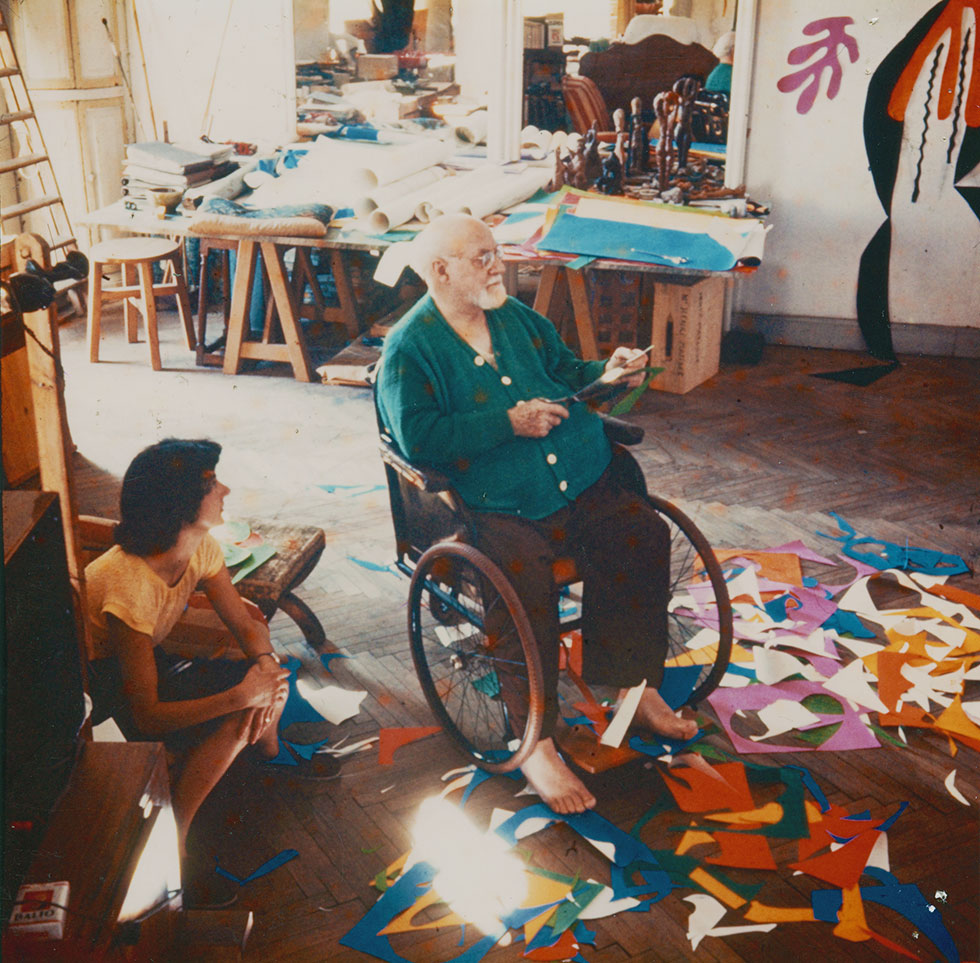
“If I have confidence in my hand that draws, it is because as I was training it to serve me, I have never allowed it to dominate my feeling. I very quickly sense, when it is paraphrasing something, if there is any disaccord between us: between my hand and the “je ne sais quoi” in myself which seems submissive to it.
The hand is only an extension of sensibility and intelligence. The more supple it is, the more obedient. The servant must not become the mistress.”
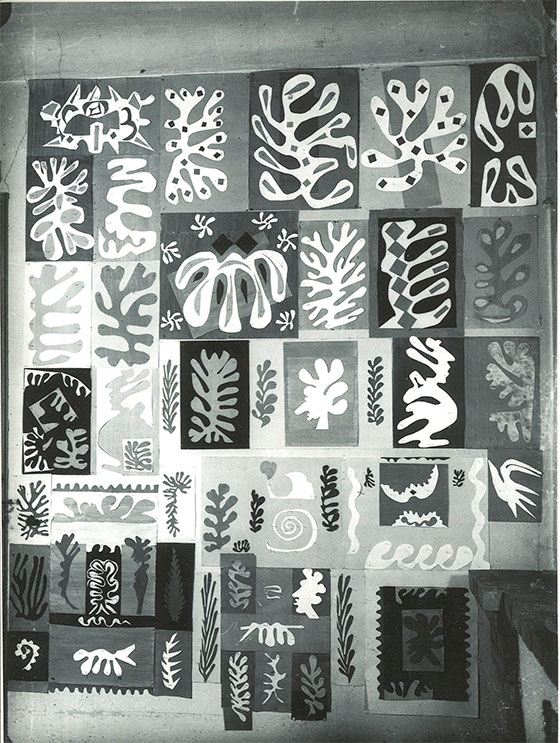
“The walls of my room are filled with decoupages.”
“I am currently turning my attention towards more matte, more immediate materials, which has led me to search for a new means of expression. The paper cut-out enables me to draw in colour. It’s a question of simplification for me. Instead of drawing the contour and filling it in with colour – one modifying the other – I draw directly into the colour, which is all the more controlled since it is not transposed. This simplification guarantees precision in the combination of two techniques that now form only one… It is not a departure, but a culmination.”
“The thing I seek above all else is expression…”
“These successive flights of doves, their orbits, their curves glide inside me as if into a large inner space. You cannot imagine how much, in this period of paper cut-outs, the sensation of flight I felt inside helped me adjust my hand when it was guiding the path my scissors took. It’s rather hard to explain. I would say that it is a sort of linear, graphic equivalence of the sensation of flight.”






“You need to leave space to set the viewer dreaming.”
“These rebellions led me to study each element of construction: drawing, colour, values, composition; to explore how these elements could be combined into a synthesis without diminishing the eloquence of any one of them by the presence of the others, and to make construction from these elements with their intrinsic qualities undiminished in combination; in other words, to respect the purity of the means.”

